Happy new year! Here are some tracks and sign from the last bit of 2015.

A long-tailed weasel hunts an open meadow.
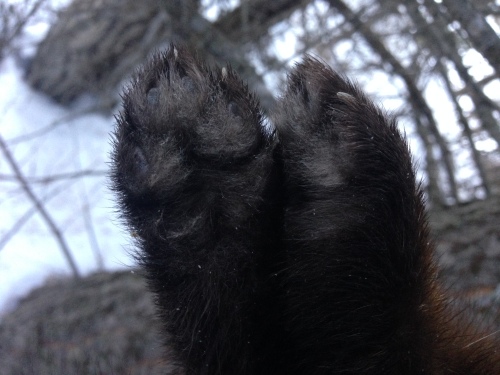
The heavily furred feet of an American marten. These guys have four “plantar” glands on each hind foot… I wish I had tried to photograph them but they look like tiny little bumps on the palm pad and they are used for scent communication.
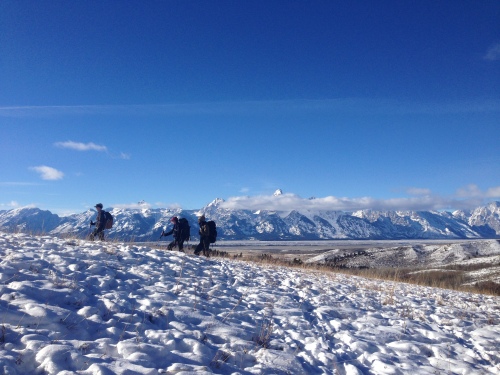
Beautiful day in the Tetons chasing mountain lions.
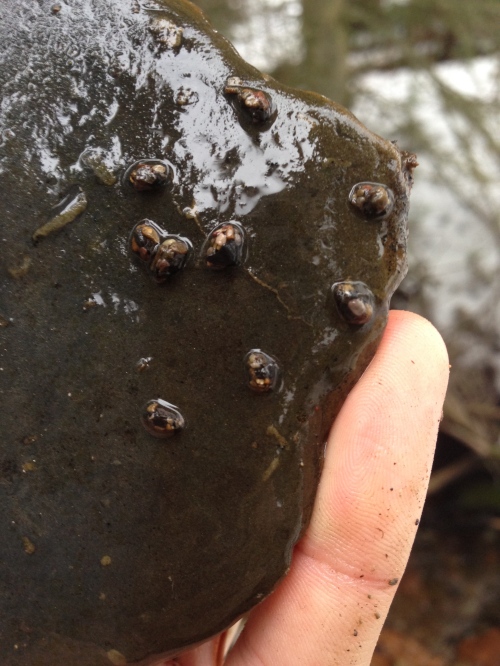
A good habit that I try to adhere to, is to occasionally take a moment and look deeper for signs of life… try to see the subtle signs normally overlooked. It doesn’t take long to notice an aphid on a leaf or some other overlooked creature. The second step is to do some research and figure out what you’re looking at. I believe these little clumps of stones are caddisfly casings from the genus Glossosoma. https://en.wikipedia.org/wiki/Glossosomatidae Apparently, they create these tiny stone casings with silk and are an indicator of excellent water quality since they are so susceptible to pollution.
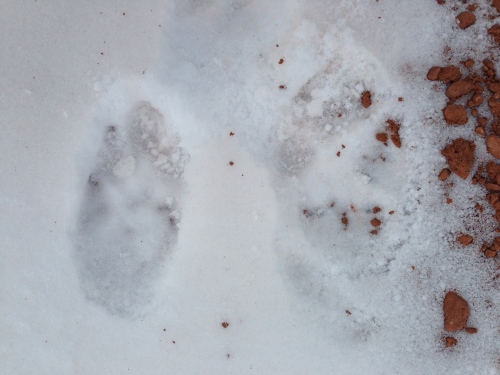
Jackrabbit on the left and red fox on the right.
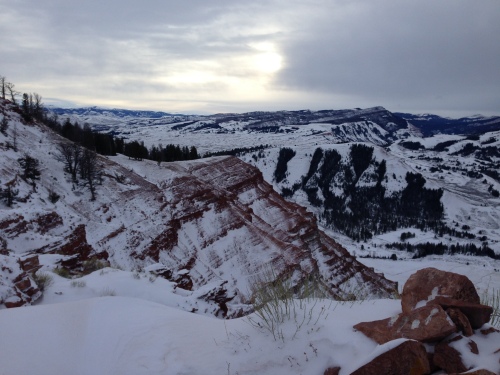
Beautiful red hills of the Gros Ventre. The jackrabbit from above was cruising around in these cliffs.
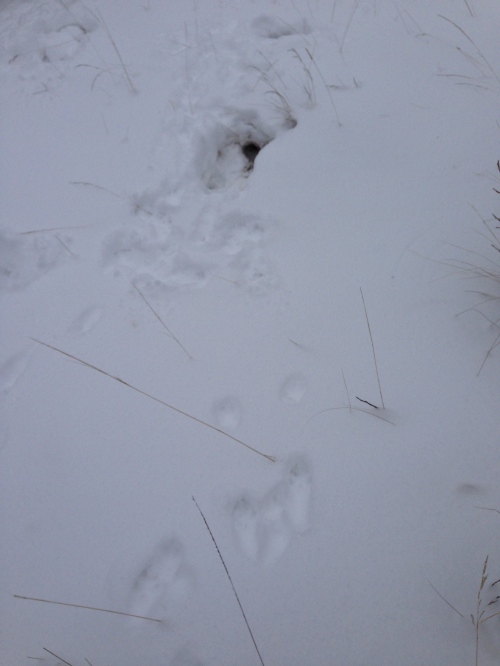
Awesome tracks of a red fox crouching and diving headfirst into the snow in hopes of catching a meal. In one study they found that their success rate goes up to 90% when they orient north or south before their pounce. This one was pointed west and I have no idea if they were successful.

Cool beaver tracks in the snow.
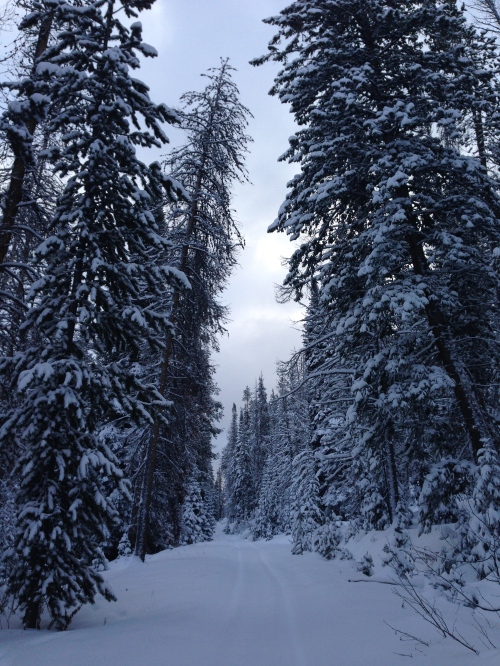
Breaking trail deep in the backcountry on a snowmobile.
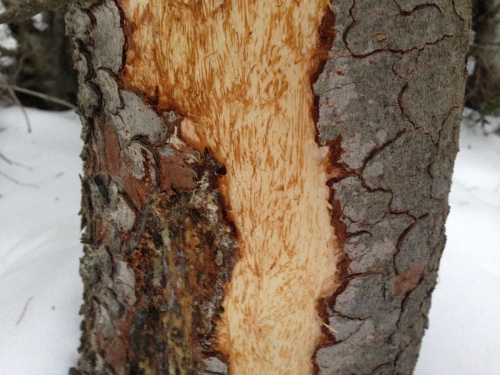
The next bunch of pictures are of the often overlooked feeding sign of red squirrels. Just like porcupines, bears, rabbits and ungulates, red squirrels eat the bark of conifer trees. Their teeth grooves are tiny and they usually remove smaller patches of bark although I’ve also found some very large patches from several years of feeding. Also noteworthy is that many of the trees I’ve seen this sign were weakened by the squirrel and later killed by the mountain pine beetle.
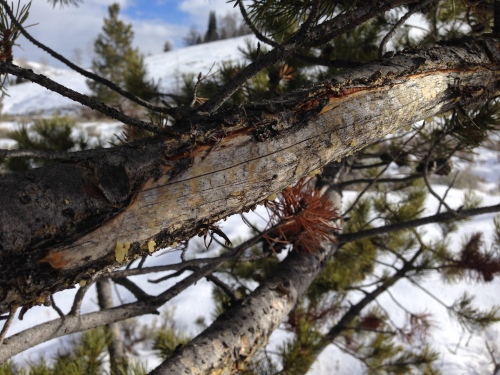
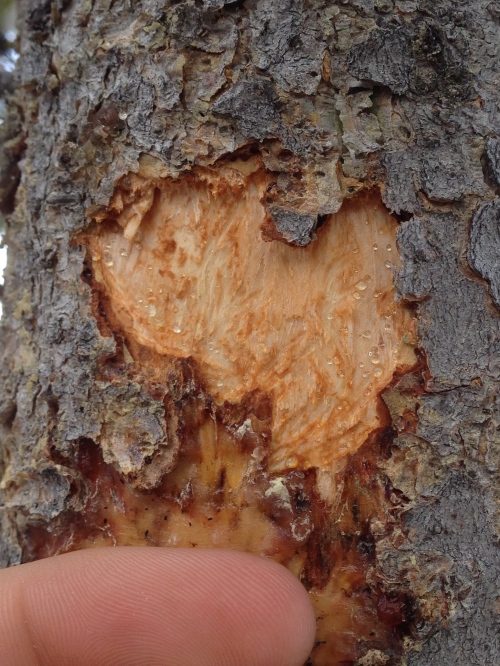
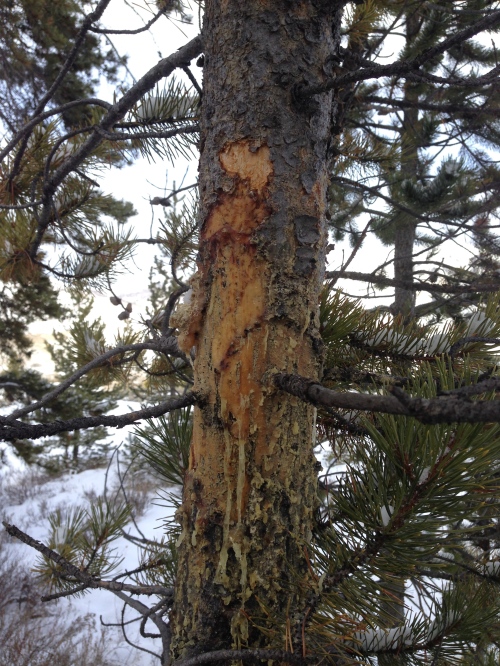
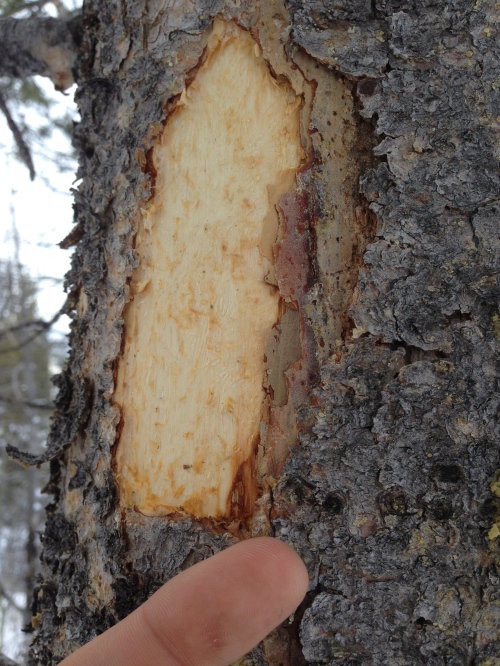
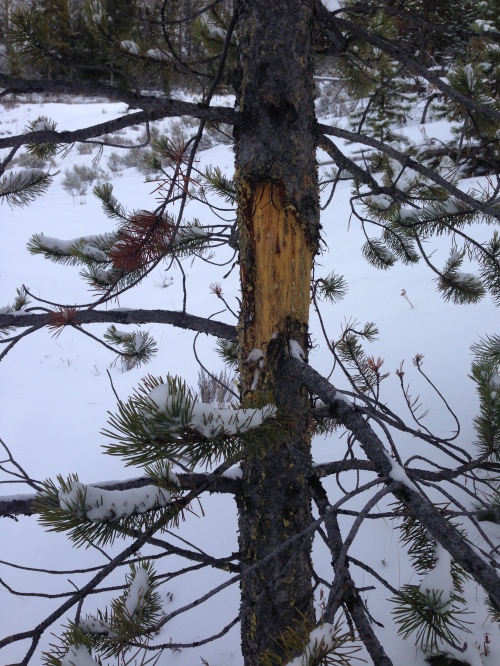
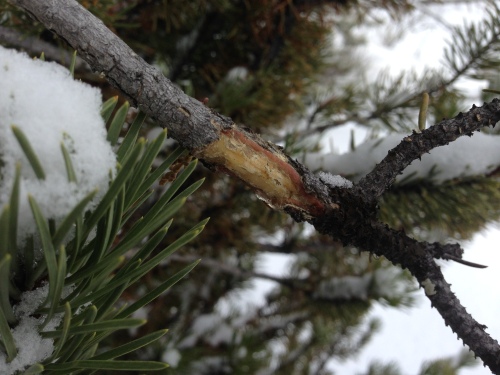
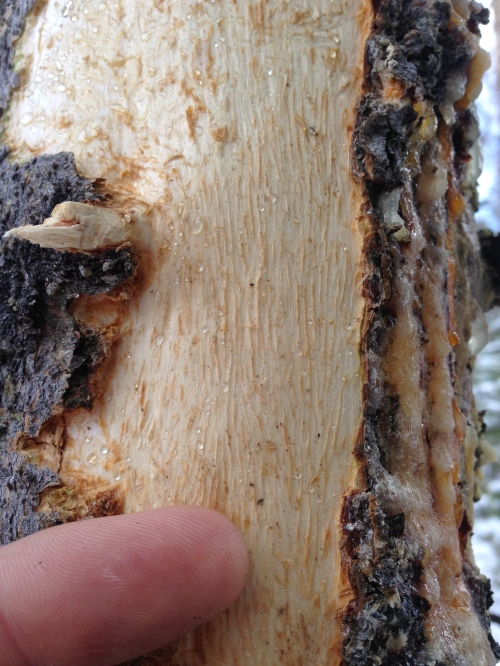
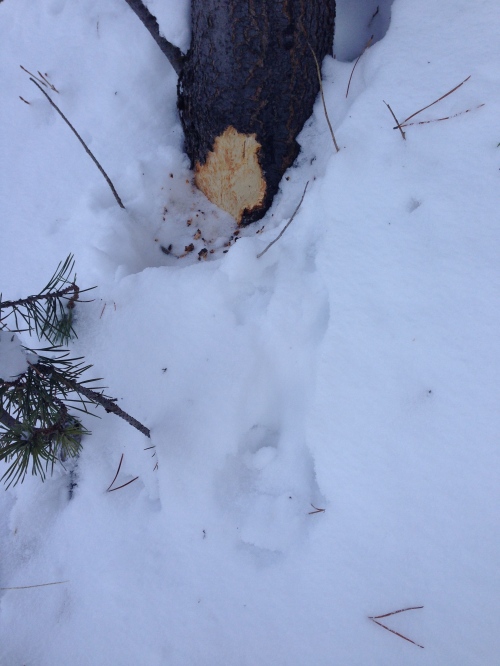
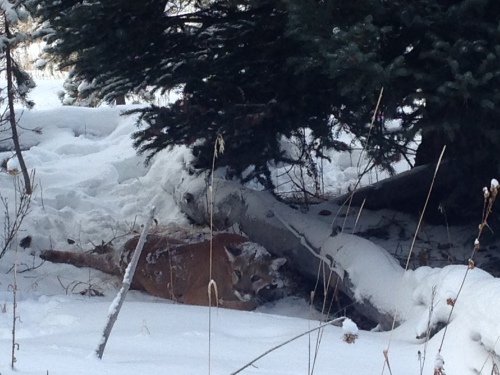
We caught a new cougar, F72. Healthy looking first time mother.
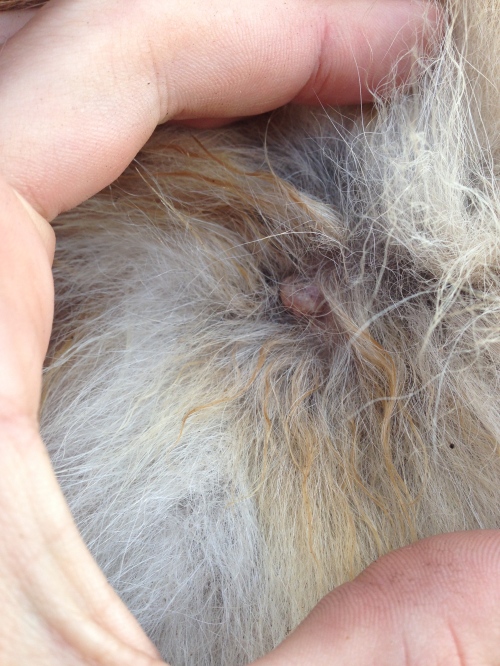
Compare this nipple with the one below. The brown staining is a sign of nursing. This is F72 who has at least one kitten but likely not more than two since most of her nipples had not been nursed.


At the base of this tree was a dead porcupine. Look closely for the black arrows pointing to quills and fur stuck to the tree. Mountain lions don’t just kill porcupines on the ground they will even climb up and pull them out of trees!

This is the same tree showing porcupine cambium feeding. The teeth grooves are much larger than the red squirrel feeding.
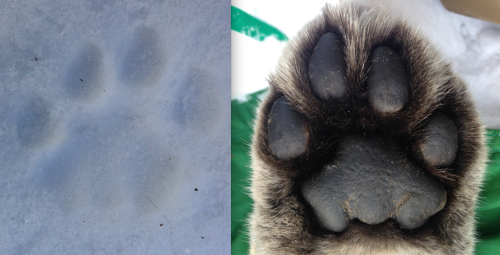
I’ve been working on recognizing individual cougars by their tracks. Here is F72. She has a very distinctive shape of her heel pad. It has wings that stick out. Also her right front foot is way larger than her left front. I think we can recognize individual animals by their tracks more often than we realize if we really look closely at the details.
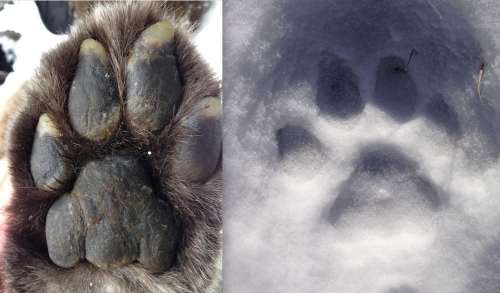
Here is M85’s foot and track. His are pretty easy to recognize because his toes have these crazy frostbitten tips on them.
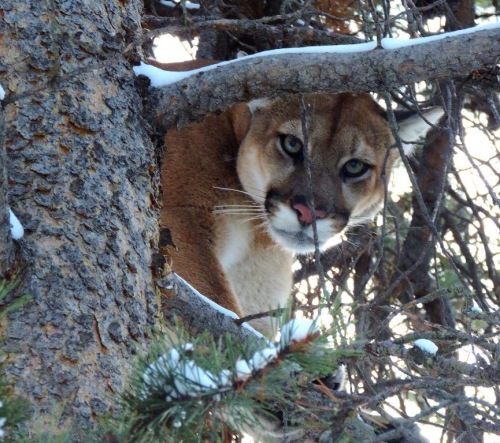
A better picture of F72 taken by Jen Feltner.
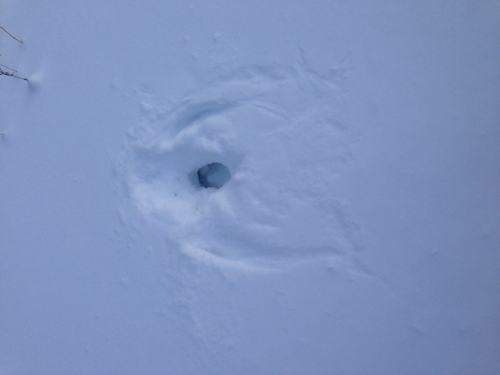
Here is the impression of an owl going after some small mammal under the snow. There are a few clues that led me to this conclusion: 1. There are no tracks leading up to this impression so we know it is a bird. 2. The only birds that hunt by sound (since there are no tracks on top of the snow) are harriers and owls. Harriers have left for the winter… so it must be an owl hunting a small mammal… I’m guessing its a great horned owl hunting a vole.
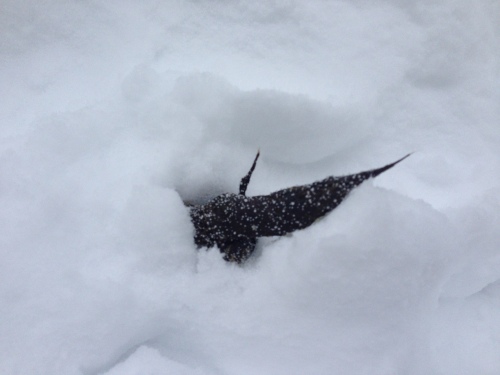
Cougar kitten scat. This is one of F49’s kittens who is around 6 months old. Cat scat is supposed to have blunt ends… which is why I like this one.
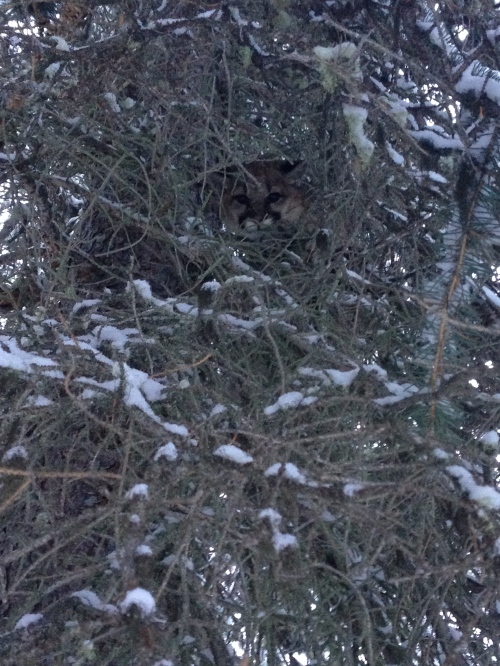
As I was searching for cougar tracks I looked up and not 4 feet from my face was this cougar kitten hiding in a tree!
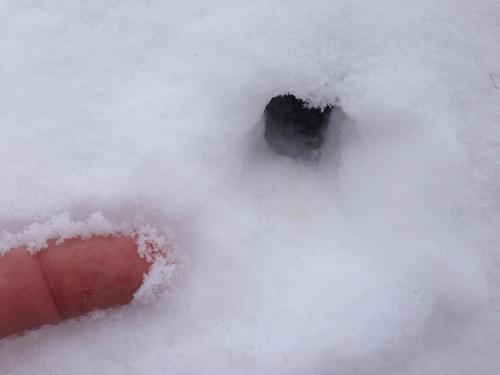
I’m not sure if you’ll be able to see it but this little shrew tunnel is marked with a spot of urine right at the entrance.
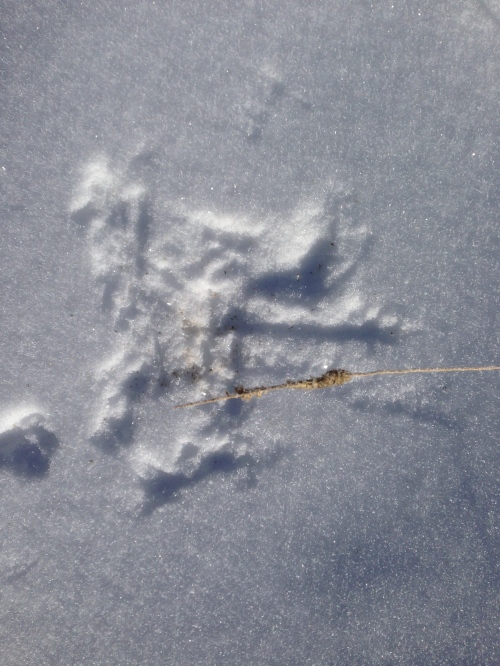
An intriguing mystery… some critter was feeding on these grass seeds…
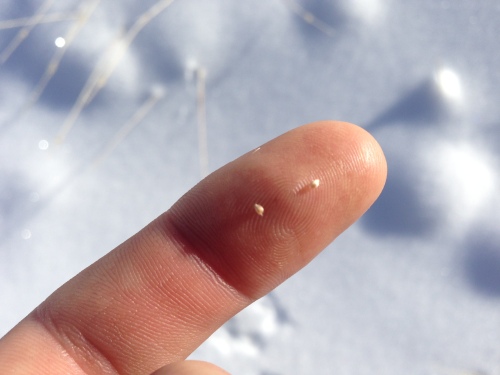
Here are the tiny seeds they were eating. As is often the case, I had no idea who the culprit was… A couple hours later I took a break from my hike and sat down in the snow and a huge flock of redpolls (small northern finches) surrounded me as they fed on the timothy grass seeds. I took a video of them which you can see on the link below. It was too cool to watch them land on the thin grass stems, riding them down into the snow and feeding on the seeds; solving the mystery from a couple hours prior.
https://www.instagram.com/p/_5Xyk5x7Aq/?taken-by=wcomalley86
Thanks for reading!
Great stuff man!! I would love to be doing this kinda stuff when I’m older. Looking into and contacting the Tracker School to learn a bit more about there, and I’m still learning about nature, naturalist things, tracking, and all that good stuff nearly every day!
The only problem I have is, how do I do that, and still provide for myself and a family (if I ever have one). What do you do? Do you primarily do volunteer work and then work locally at misc. places and jobs for a little bit, or do you primarily do internships? Do you regularly attend classes at Tracker School, Wilderness Awareness School, and other places like that? How do you these kind of things, and still have money to provide for your expenses, like car insurance, gas, etc.
I hope I’m not being nosy, and if I am, please let me know, but you’re doing exactly what I want to do when I’m older, and I’m not exactly sure how to do it. However, since I know someone who does, I figured I could ask. If I’m being nosy, please let me know and don’t feel like you can’t tell me that 🙂 .
Hey Evan you’re not being nosy I’ll send you an email. Right now I work full time as a biologist which lets me be out in the woods looking at cool stuff every day.
Ok gotcha! Thanks man! Didn’t know you were a biologist, that’s what I’ve been thinking about doing 🙂
Did you witness the red squirrel feeding? There was a debate about this type of sign among some East Coast trackers, I would love to be able to claim knowledge of a first hand account.
Hey Andy I haven’t seen the red squirrels in action but maybe I’ll try to set a trail camera on a fresh one and see if we can get them. The incisor size is too tiny for porcupine and we hardly have any porcupines here. The most definitive thing I’ve seen are fresh squirrel tracks in recent snow going right up to the sign and fresh bits of bark on top of the snow with those tracks.
Thank so much for sharing- well done and I learned a lot….especially liked the eating sign on trees.
Very much enjoyed all the lovely details. Thanks!
Loved the pics. And the info on the owl and the nipple and feeding was fantastic. Thanks so much for educating us–Happy and prosperous New Year.